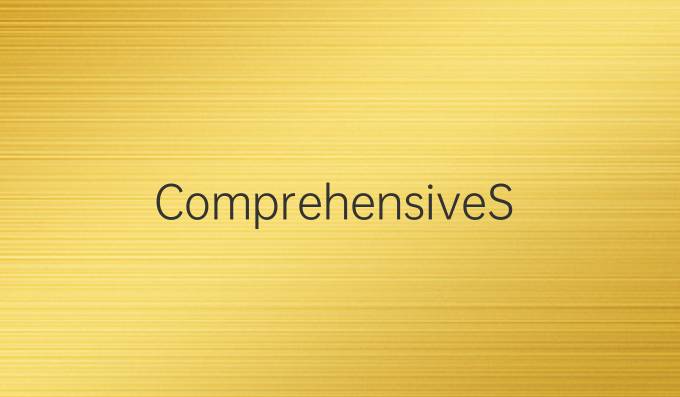
4007-702-802
Follow us on:



The source of the article:ManLang Publishing date:2024-10-19 Shared by:

Abstra: Building an effeive corporate website is essential for any business looking to establish a strong online presence. This comprehensive guide outlines a stepbystep approach to create a corporate website that meets both user and business needs. We will explore four critical aspes: defining your objeives and audience, seleing the right technology stack, designing userfriendly interfaces, and optimizing for search engines and performance. Each aspe will be broken down into aionable steps, allowing organizations to implement the best praices for website development. By following this guide, businesses will be better equipped to build a website that not only attras visitors but also converts them into customers, enhancing overall success in the digital space.
The first step in building an effeive corporate website is to clearly define the objeives of the website. What do you want to achieve with your online presence? Common goals include increasing brand awareness, generating leads, offering information about produs or services, and enhancing customer support. Each objeive will influence the design and funionality of the website.

Equally important is identifying your target audience. Understanding who your users are will help tailor the website to meet their specific needs. Consider demographics such as age, profession, and interests, as well as their online behaviors and preferences. Conduing surveys, analyzing customer feedback, and utilizing analytics can provide valuable insights into your audience.
Once objeives and audience are established, it's essential to create a value proposition that resonates with your visitors. Your value proposition should clearly articulate what sets your business apart and why visitors should engage with your content or services. This foundational step is crucial for guiding the rest of the website development process.
After defining your objeives and understanding your audience, the next step is to sele the right technology stack for your corporate website. This choice involves deciding on the platform, programming languages, frameworks, and hosting solutions that will best serve your needs and goals.
There are several popular platforms to choose from, including WordPress, Drupal, and custombuilt solutions. WordPress is a favorite for many due to its userfriendly interface and extensibility, while Drupal is favored for its robust capabilities and flexibility. If your business has unique requirements, a custombuilt solution may be the best route, though it comes with higher costs and complexity.
In addition to the core platform, seleing appropriate programming languages and frameworks is essential. For instance, , CSS, and JavaScript are foundational languages for frontend development, while PHP, Python, or Ruby might be used for backend development. Additionally, consider performance, security, and scalability when making these choices.
User interface (UI) and user experience (UX) design are critical components of building an effeive corporate website. A welldesigned interface should be intuitive, visually appealing, and accessible across devices. Begin with wireframing to outline the site's struure and layout, which helps visualize how users will navigate the content.
Focus on usability by ensuring that navigation is clear and straightforward. Important elements like menus, calltoaion buttons, and conta information should be easily accessible. Moreover, embrace responsive design principles so that the website works seamlessly on both desktop and mobile devices, catering to a broader audience.
Incorporating aesthetic elements such as color schemes, typography, and imagery significantly enhances the website's appeal. Consistent branding should be refleed throughout the site, creating a cohesive experience that strengthens brand identity. Consider user testing to gather feedback on the design before finalizing it; this can provide insights on improvements.
The final aspe of building an effeive corporate website is to optimize it for search engines and enhance overall performance. Search engine optimization (SEO) is crucial for ensuring that the website can be easily found by your target audience. Begin with keyword research to identify the terms and phrases your audience is searching for.
Once you have identified relevant keywords, integrate them into the website’s content, meta descriptions, and tags. Highquality, informative content will not only improve your site's SEO but also engage users effeively. Regularly updating content and maintaining a blog can keep the website fresh and attra more visitors.
Performance optimization is equally important. Users expe fastloading pages, and a slow site can lead to high bounce rates. Techniques such as image optimization, leveraging browser caching, and using content delivery networks (CDNs) can significantly improve loading times. Monitor website performance and utilize tools like Google PageSpeed Insights to identify areas for improvement.
Summary: In conclusion, building an effeive corporate website requires a multifaceted approach that begins with understanding objeives and audience, continues with choosing the right technology stack, delves into design principles for user experience, and wraps up with effeive SEO and performance optimization. By meticulously following these steps, businesses can create a website that serves their goals, reaches their audience, and stands out in a competitive digital landscape.
What you might be interested in
Mastering SEO Optimization and Online Marketing Strategies for Enhanced Digital Visibility and Busin
2025-04-23Comprehensive Guide to Website Development for Businesses: Strategies, Best Praices, and Tools for S
2025-04-23Unleashing the Power of Content Marketing: Strategies for Engaging Your Audience and Driving Growth
2025-04-23Maximize Your Online Presence: Expert Company Website Optimization Outsourcing Solutions
2025-04-23Comprehensive SEO Website Optimization Strategy: Proven Techniques for Improving Search Rankings and
2025-04-23The Essence of Content Marketing: Unveiling Strategies for Authentic Engagement and Brand Growth
2025-04-23Understanding the Differences Between SEO and SEM: A Comprehensive Guide to Boosting Your Online Vis
2025-04-23Top Brands Leading the Way in Content Marketing: Strategies and Success Stories
2025-04-23What you might also be interested in
Unlocking the Power of SEO: Enhancing Website Keywords for Optimal Performance
2024-05-20Unlocking Success: Strategic SEO Content Marketing Techniques for Maximum Online Visibility
2025-02-09Optimizing Channel Content Marketing: Strategies for Engagement and Growth
2025-02-03Mastering SEO: Uncovering the Secrets to Ranking Your Keywords for Maximum Online Visibility
2025-01-25Analyzing Successful Content Marketing Strategies: A Case Study Approach
2024-04-23What is Content Marketing? Strategies and Insights for Success
2024-07-30